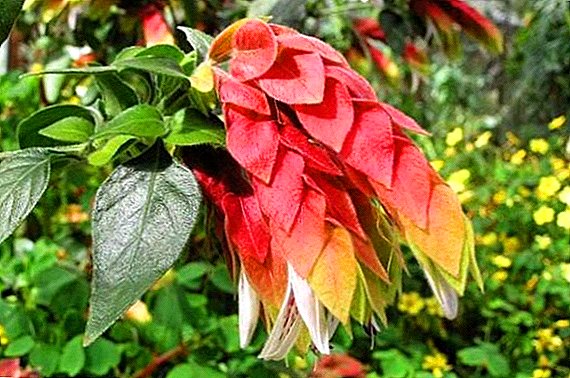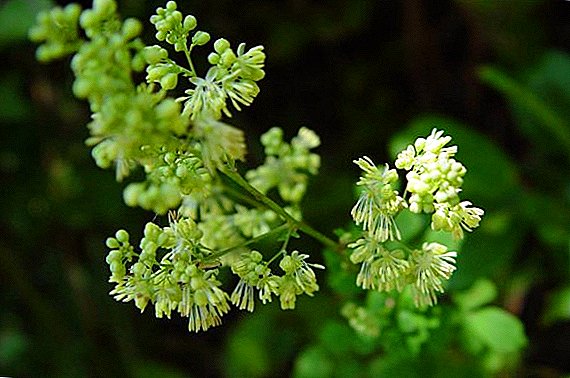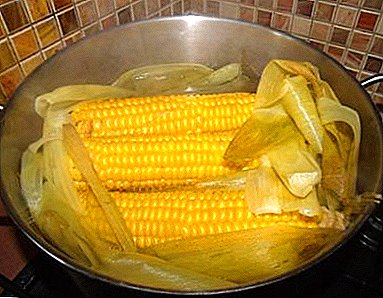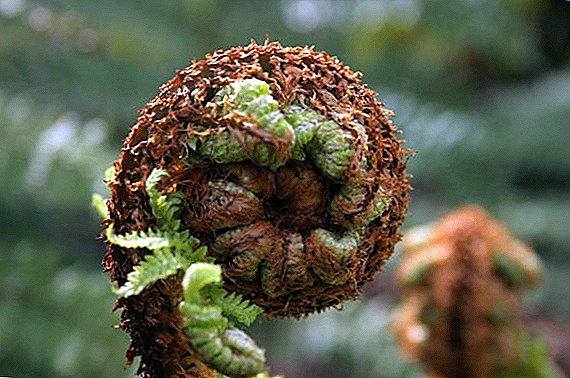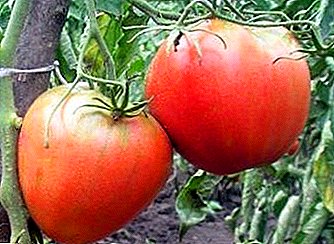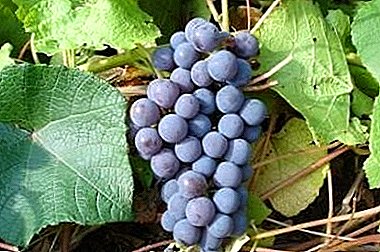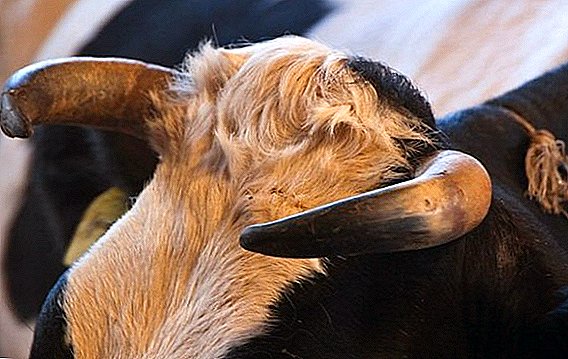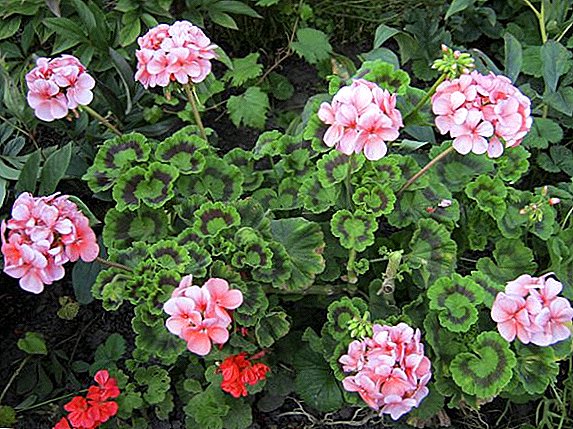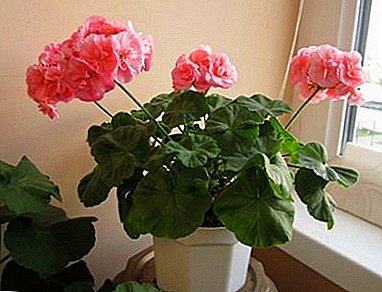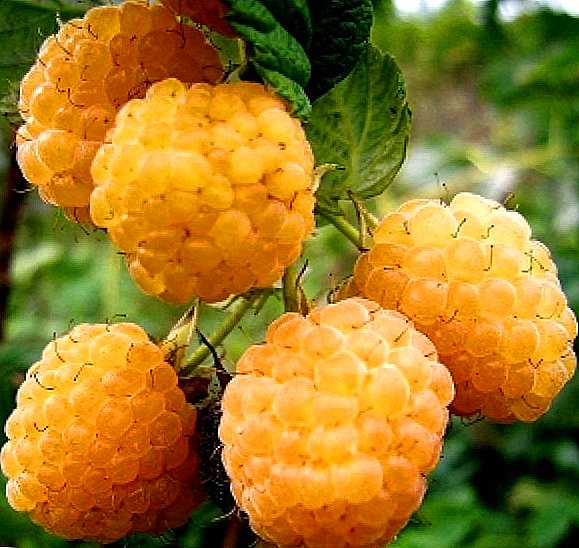
In many gardens, even among the most avid amateur agrotechnists, it is rare to find yellow raspberry bushes.
People are accustomed to the fact that these berries are red, but not amber. Red raspberries - is a relative of the usual wild berries - forest raspberries. But once in this "domesticated" plant mutation occurred, which caused the appearance of raspberry berries atypical amber color.
In order to preserve this miracle of nature, people decided to propagate this variety, thanks to which we can now enjoy these sweet berries.
What is good yellow raspberry, so it is the lack of an allergic reaction to it. Therefore, these berries have become available even to those who suffer the most diverse manifestations of allergy to red raspberry berries.
Like the red raspberry, the yellow berries of this crop have many varieties, each one more beautiful than the other.
Yellow raspberry is different high yield and prolonged fruiting. Berries do not ripen all at the same time, and with proper care of the plants, the total yield is 6 kg of berries of excellent quality from one plant.
The berries of yellow raspberry are quite large, the weight of one fruit varies between 4 and 9 grams.

Yellow raspberry bushes are representatives of the Rubus genus, family Pink. It looks like deciduous shrubs.
These plants have a perennial, winding, woody rhizome. A large number of adventitious roots are formed on it, therefore the root system of the bushes of yellow raspberry is very powerful and branched.
Ground shoots can reach a height of 1.5 - 2.5 m. Stems are erect, annual shoots are grassy, covered with a bloom of gray color, covered with small thin needles.
Already in the second year of life, the shoots woody, change color to brown, and shrivel after fruiting. The following year, new, young stems are formed.
The leaves are petiolate, oval-shaped, covered with "villi". The inflorescence of the yellow raspberry is racemes, the flowers are lying either in the leaf or on the tip of the stem.
Duration of flowering depends on the climatic conditions of the region, but often flowering begins in June, and ends in July, but sometimes in August. The flowers have a faint, but very heady smell. The berry of this raspberry variety is an overgrown, “fluffy” amber-colored drupe.
The bulk of the crop can be collected in August, but some berries will have time to ripen faster.
Growing yellow raspberries is a very profitable occupation, as the plants start to bear fruit 2 years after planting, and in the conditions of the southern climate - in a year.

Of course, the yellow raspberry is not ideal. Despite all its advantages such as excellent taste and aroma, resistance to diseases and a long period of fruiting, yellow raspberry quickly loses its presentation.
The berries are too soft, so it is almost impossible to transport them. This is one of the main reasons for the lack of industrial production of yellow raspberries.
You can also notice that there are a lot of small thorns on the shoots, which makes the harvesting process rather laborious and sometimes painful.
The root system of the bushes of this raspberry variety grows very quickly, so if you do not remove the extra roots in time, then this raspberry can fill the whole earthen space of the garden.
Landing features
The place where you plan to prikopat yellow raspberry seedlings should be well lit. Too much moisture should not be concentrated in the ground, since an excess of water can lead to rotting of the root system of plants.
Yellow raspberry bushes do not require special fertility of soil, but it does not hurt soil top dressing in the form of peat or manure.
It is also desirable to make sand and nutrient mixtures. So young seedlings adapt faster and take root in a new place.
It is impossible to plant yellow raspberries where soils are marshy, in places with dry sandy or calcareous soils.
It is best to drop the seedlings around the enclosures or fences, so that later you can start raspberries like on a trellis. The best predecessors for the yellow raspberry are carrots, legumes, zucchini and cucumbers.
You can not dropping sprouts where they grew potatoes, peppers, strawberries and tomatoes, because these crops with common raspberries, common diseases and pests.

Dripping seedlings can be both in spring and autumn. Even in summer, you can drip these plants, but if you use green cuttings. Planted yellow raspberries can be in the pits and in the trench.
If you decide to plant seedlings in pits, then you need to make holes 40x50 cm. Topsoil should be mixed with rotted manure and mineral fertilizers, make a mound of this soil at the bottom of the hole and put a seedling on this mound.
You can not make a fertile mixture, and before planting just dip the roots of the seedling in the solution of mullein and sprinkle with this top layer of soil.
Between adjacent seedlings you need to do an interval of 1 m, and between adjacent rows - 2 m. Saplings need to be instilled so that the root neck rises a few centimeters above the ground level.
When the earth settles, the sapling will fall by itself. No need to bury too much or raise the root neck too much above the soil level.
If you are going to plant sprouts in trenches, then the recesses should be made 50 cm wide and 45 cm deep. The aisles should occupy about 1 m, and the interval between adjacent plants should be approximately 50 centimeters.
The mixture, which you will fill up with the roots, must be prepared by yourself, mixing the rotted manure, mineral fertilizers and the top layer of the earth. After planting, the soil must be covered with peat, humus or dry soil mulch. If the seedlings are well developed buds, then the sprouts should be shortened to a length of 30 cm.
Features care for raspberries

It is necessary to water a yellow raspberry when it is really necessary. The soil should not dry out or be too moist.
One year after landing need to prune shoots annually right after harvest, or in early spring. The soil in planting should be constantly loosened to a depth of 6 to 8 cm so that no crusts form on the ground, and the roots can "breathe."
The soil between the rows must be mulched with peat or chopped straw. When preparing for winter shoots need to bend down so that they do not freeze. Mandatory garter yellow raspberries, because of the abundance of the crop, the stems can break under the weight of their own fruit.
When pit planting often use a fan-shaped garter of crimson bushes. If the landing was carried out in a trench, then it will be necessary to install a trellis to create support for the bushes.
It is necessary to feed the yellow raspberries with both mineral and organic fertilizers. It is necessary to make additional feeding in the third year after planting in spring and autumn. Nitrogen in the form of urea or ammonium nitrate must be applied in the spring period with calculations of 8 g of urea or 10 g of nitrate per square meter. square meter.
Potassium should be applied in the autumn in the form of wood ash (100 g per square meter). In the autumn you need to make organic (4 - 6 kg of manure or compost per square meter).
Growing yellow raspberries is as easy as growing red. Therefore, forward to new challenges. Successes.


